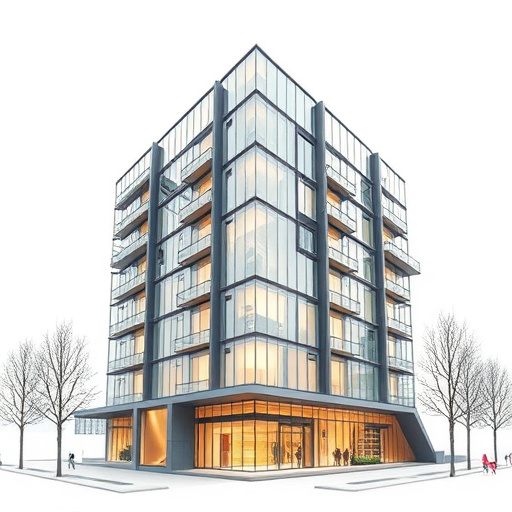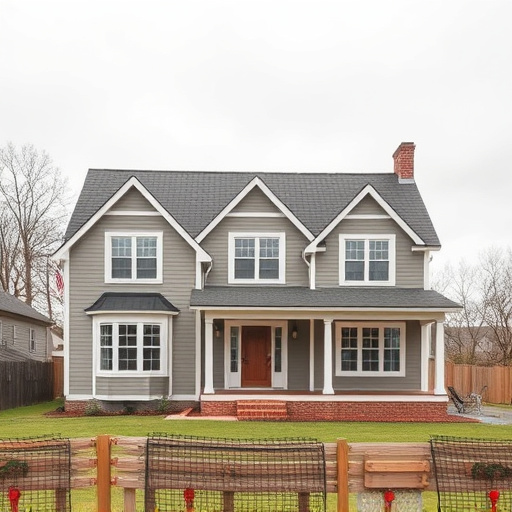Residential builders face client change requests as both a challenge and opportunity. Through effective communication, detailed planning, and flexible project management, they transform client visions into reality with functional, high-quality spaces. Key strategies include active listening, regular updates, well-defined change order processes, scoping requests for impact assessment, fostering trust, offering tailored solutions, and transparently managing expectations to ensure client satisfaction without compromising project viability.
Residential builders often face client change requests, which can significantly impact project timelines and budgets. This article delves into the strategies employed by residential builders to navigate these dynamic situations. We explore the effects of change requests on builders’ operations and offer insights into effective communication, change management, and balancing client satisfaction with project feasibility. By understanding these practices, both builders and clients can ensure smoother construction processes.
- Understanding Client Change Requests: The Impact on Residential Builders
- Strategies for Effective Communication and Management of Changes
- Balancing Client Satisfaction and Project Feasibility: Best Practices for Builders
Understanding Client Change Requests: The Impact on Residential Builders

Client change requests are a common occurrence in the residential building industry. While they can present challenges, these requests also offer opportunities for builders to customize homes to their clients’ unique needs and preferences. Understanding the motivations behind change requests is essential for both parties. Clients often seek to personalize their future homes, ensuring it aligns with their lifestyle and aesthetic vision. This could range from modifying floor plans to selecting specific interior painting schemes or even incorporating custom features during home remodeling.
Residential builders need to adapt to these dynamic demands while managing project timelines and budgets. Efficient handling of change requests involves clear communication, detailed planning, and flexible project management strategies. Builders who excel in this aspect often provide a seamless experience for clients, transforming their vision into reality. They ensure functional spaces that cater to modern living while maintaining high-quality craftsmanship, ultimately elevating the satisfaction levels of their customers.
Strategies for Effective Communication and Management of Changes

Effective communication is key when managing change requests from clients. Residential builders should establish clear channels of communication right from the initial client meeting. This involves actively listening to understand the client’s vision, and then translating that into actionable tasks. Regular updates, whether through emails, phone calls, or in-person meetings, help keep the client informed about progress and any changes required. A well-defined process for change orders ensures that both parties are on the same page; this includes documenting all requests, their impact on timelines and costs, and obtaining formal approvals before proceeding.
A strategic approach to change management involves assessing the scope of each request. Smaller modifications, like updating light fixtures or choosing different countertop materials, can often be accommodated with minimal disruption to the project timeline. However, major changes such as adding a new room or significantly altering floor plans might require re-evaluating the initial budget and schedule. Professional residential builders should guide clients through these scenarios, offering solutions tailored to their needs while ensuring transparency throughout the process. This management strategy fosters trust and ensures client satisfaction, even when changes are requested during construction.
Balancing Client Satisfaction and Project Feasibility: Best Practices for Builders

Residential builders often face a delicate balance between meeting client expectations and ensuring project feasibility. When clients request changes during construction, it’s crucial to handle these requests effectively while considering both the impact on timelines and budgets. A residential builder should aim to foster an environment where clients feel heard and understood, while also maintaining clear communication about what’s possible and what’s not within the current scope of work.
Best practices include offering flexible options for adjustments, such as allowing for customized work in areas like kitchen remodels or facilitating floor replacements with minimal disruption. However, it’s essential to assess each request against project constraints. Transparent discussions about potential delays, cost increases, or design alternatives can help manage client expectations and prevent unforeseen issues from derailing the overall construction process.
Residential builders play a pivotal role in bringing client visions to life, but change requests can significantly impact project timelines and budgets. Effective communication and strategic management are key to navigating these requests successfully. By adopting best practices that balance client satisfaction and project feasibility, residential builders can ensure satisfying outcomes for both parties. This approach not only fosters strong client relationships but also strengthens the builder’s reputation in a competitive market.














